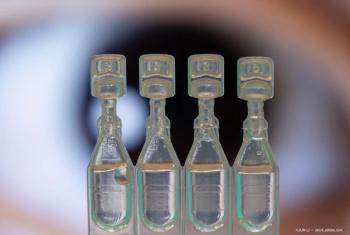
Alcon IOL receives NTIOL designation
Fort Worth, TX-The Centers for Medicare and Medicaid Services' (CMS) New Technology Intraocular Lens (NTIOL) classification of Reduced Spherical Aberration has been applied to the AcrySof IQ IOL (Alcon Laboratories). The IOL gained inclusion by proving the same or greater clinical benefit as the lens that established the NTIOL subset, according to Alcon Laboratories.
Fort Worth, TX-The Centers for Medicare and Medicaid Services' (CMS) New Technology Intraocular Lens (NTIOL) classification of Reduced Spherical Aberration has been applied to the AcrySof IQ IOL (Alcon Laboratories). The IOL gained inclusion by proving the same or greater clinical benefit as the lens that established the NTIOL subset, according to Alcon Laboratories.
The NTIOL designation, which went into effect May 19, means ambulatory surgery centers using the AcrySof IQ IOL for cataract surgery will receive an additional $50 from Medicare. The NTIOL subset and adjusted payment will remain in effect until Feb. 27, 2011.
"We are pleased that CMS has recognized the clinical advantages that patients gain from this advanced lens technology versus conventional IOL implants," said Kevin Buehler, senior vice president, United States, and chief marketing officer, Alcon. "Studies have shown that by reducing spherical aberration, the AcrySof IQ IOL enhances image quality and improves customer sensitivity."
The FDA also granted the industry's broadest wavefront-guided hyperopic indication for Alcon's CustomCornea procedure on both the LADAR6000 laser and the LADARVision 4000 System. Surgeons will now be able to treat hyperopia and hyperopic astigmatism (0.75 to 5 D sphere with up to –3 D cylinder) in addition to the current range for myopia and myopic astigmatism.
Newsletter
Don’t miss out—get Ophthalmology Times updates on the latest clinical advancements and expert interviews, straight to your inbox.














































.png)


